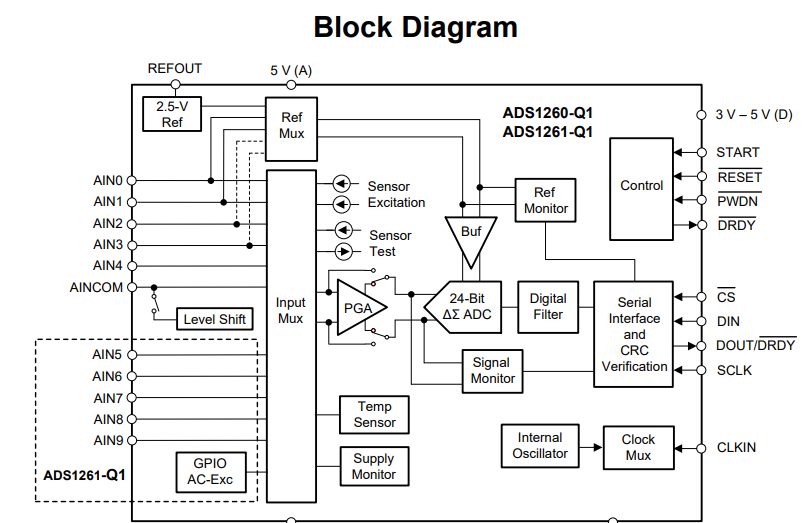Other Parts Discussed in Thread: ADS1261-Q1, ADS122C04
I have to read 4 strain gauge using 4 half bridges (2 half bridges with resistors, 2 half bridges with strain gauge), so I have to convert 2 differential voltage.
ADS1260-Q1 seems to have 3 differential inputs, how does it mean? because the chip has 5 single ended input. Can I use it? And if yes, can I use PGA on both the 2 differential inputs?


